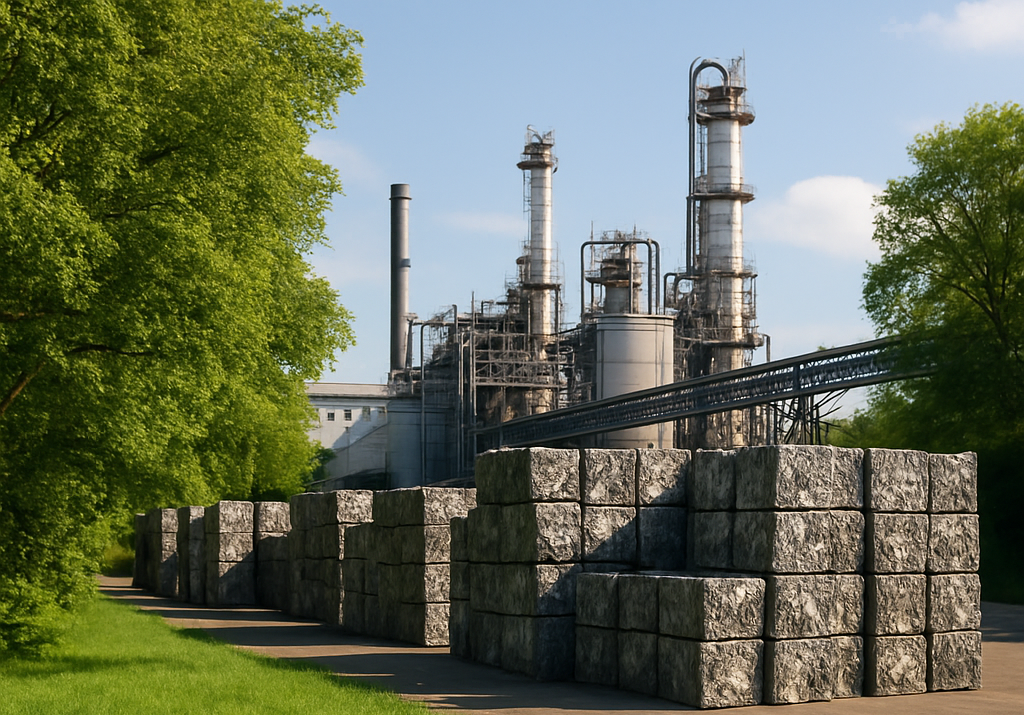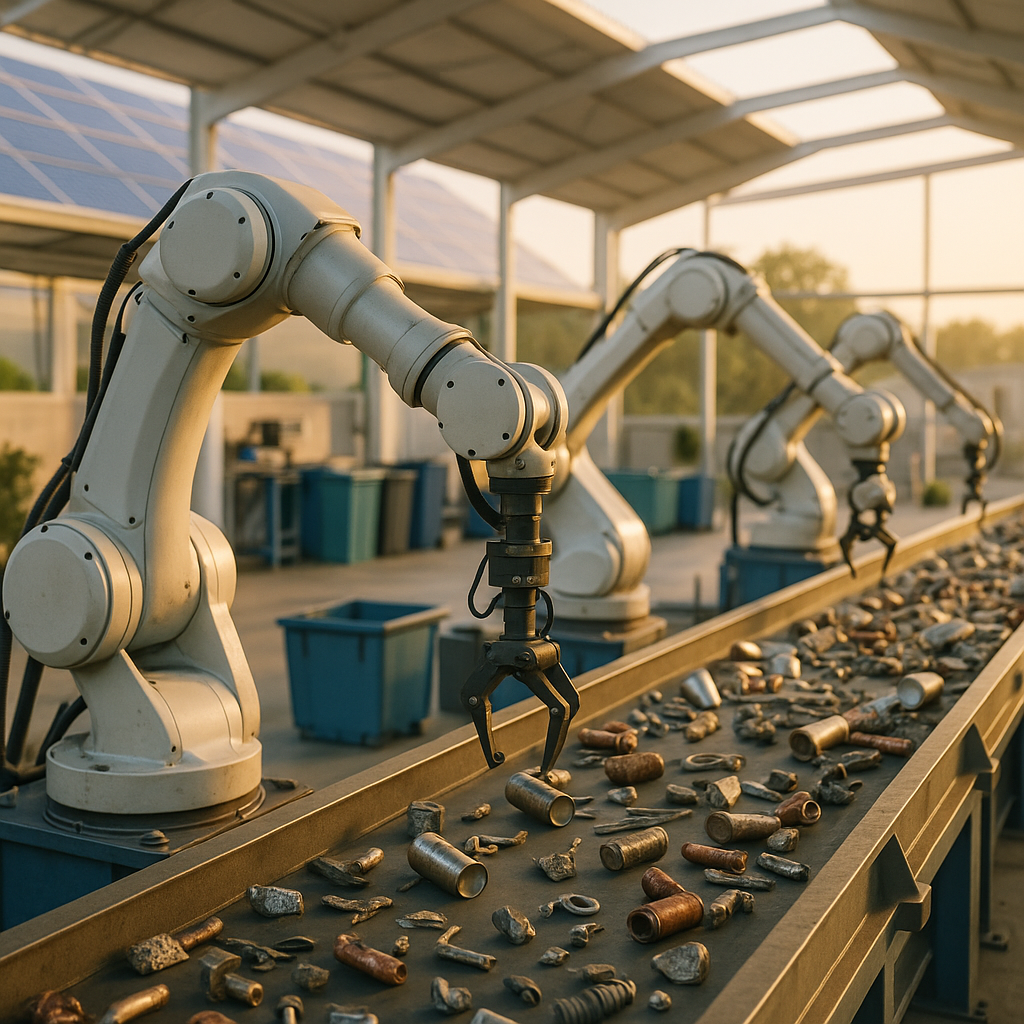5901 Botham Jean Blvd, Dallas, TX 75215
Scrap Processing: Key Steps, Benefits, and How Metal Recycling Powers a Sustainable Economy
September 18, 2025Ever look at a discarded metal object and wonder where it ends up? Scrap processing transforms these unwanted metal items into valuable raw materials that manufacturers use to create new products. This crucial industrial activity serves as the backbone of metal recycling worldwide.
The process is remarkably efficient. In the United States alone, scrap processors handle over 56 million tons of iron and steel annually, including 10 million tons from old automobiles. They also process millions of tons of non-ferrous metals like copper, aluminum, and zinc. These materials don’t just disappear into landfills – they get a second life.
Scrap processing stands as a cornerstone of sustainability for several compelling reasons. Unlike paper or plastic, metal can be recycled infinitely without degrading its inherent properties. This characteristic makes metal a truly sustainable material that can circulate through our economy repeatedly, reducing the need for environmentally damaging mining operations.
What Are the Key Steps in the Scrap Metal Recycling Process?

The scrap metal recycling process transforms discarded metal items into valuable resources through a series of specialized steps. Each phase plays a crucial role in converting what was once considered waste into new manufacturing materials. Understanding this process helps businesses and municipalities implement more effective recycling programs.
Collection
The recycling journey begins with collection. Scrap metal comes from various sources, including construction sites, manufacturing facilities, and residential areas. Many recycling facilities offer drop-off locations or pickup services for businesses that generate significant metal waste.
Collection methods vary based on volume and type of scrap. Some facilities use specialized containers for different metal categories to streamline later sorting. For industrial clients, roll-off containers may be provided to efficiently collect larger volumes.
Sorting
Once collected, scrap metal undergoes thorough sorting to separate materials by type and remove contaminants. Modern recycling facilities use both manual inspection and advanced technology to ensure accurate classification.
The sorting process typically includes:
- Magnetic separation to distinguish ferrous (iron-containing) from non-ferrous metals
- Visual inspection for initial metal type identification
- Density testing to further classify materials
- Advanced technologies like infrared scanners and x-ray systems for precise identification
Proper sorting ensures that each metal type can be processed appropriately and maintains the quality of the recycled material.
Processing
After sorting, the scrap metal is processed into smaller, more manageable pieces, increasing the efficiency of subsequent melting and reducing energy requirements. Processing methods depend on the metal type and form.
Common processing techniques include shredding, shearing, and baling. Large hydraulic machinery breaks down bulky items into smaller fragments. Shredders turn these pieces into even smaller particles to maximize surface area for melting. Some metals are compressed into dense blocks called bales for easier handling and transportation.
Melting
The processed scrap enters specialized furnaces where it is melted at temperatures specific to each metal type. Steel and iron require higher temperatures than aluminum or copper. This phase transforms the solid scrap into a liquid state suitable for purification.
The melting process uses significantly less energy than producing metals from raw ore. For example, recycling aluminum uses about 95% less energy than making it from bauxite ore. This makes metal recycling both economically and environmentally beneficial.
Purification
Purification removes remaining impurities from the molten metal, ensuring the recycled material meets quality standards for manufacturing applications. The specific purification method varies by metal type.
Some common purification techniques include:
- Electrolysis, which uses electric currents to separate metals from impurities
- Chemical treatments to remove specific contaminants
- Skimming, where impurities that float to the surface are removed
The goal is to produce recycled metal with properties comparable to virgin materials.
Solidification
After purification, the molten metal moves to cooling chambers where it solidifies into new forms. The metal may be cast into ingots, sheets, rods, or other shapes based on manufacturing requirements.
This stage prepares the recycled metal for transport to manufacturing facilities. The solidified forms are designed for easy handling, shipping, and integration into production processes.
Transportation to Manufacturers
The final step in the recycling process is delivering the processed metal to manufacturers. These companies use the recycled material to produce new products, completing the circular economy cycle.
Manufacturers benefit from recycled metals through cost savings and reduced environmental impact. The quality of properly recycled metal allows it to be used in applications ranging from construction materials to electronic components.
What Are the Environmental and Economic Benefits of Scrap Processing?

Scrap processing showcases a powerful blend of environmental responsibility and economic potential. The industry offers substantial advantages, presenting a win-win situation for businesses, communities, and the planet.
Environmental Advantages
Scrap processing’s environmental benefits go beyond keeping materials out of landfills. Recycling scrap metal conserves natural resources by reducing the need for raw material extraction. For each ton of steel recycled, approximately 2,500 pounds of iron ore, 1,400 pounds of coal, and 120 pounds of limestone are saved.
Energy conservation is among the most significant environmental benefits. Producing metals from recycled materials requires considerably less energy than manufacturing from virgin ore. Aluminum recycling, for example, saves up to 95% of the energy needed for primary production, while steel recycling cuts energy use by around 74%.
Greenhouse gas emissions are also reduced significantly through scrap processing. The reduced energy requirements directly lead to lower carbon footprints across the manufacturing sector. By minimizing the need for mining, refining, and processing raw materials, scrap recycling helps mitigate climate change by significantly reducing CO2 emissions.
Economic Benefits
The scrap processing industry generates immense economic value. According to the Institute of Scrap Recycling Industries, it contributes over $105 billion in economic activity annually across the United States.
Job creation is a clear economic advantage. The industry supports nearly half a million jobs throughout the recycling supply chain, from collection specialists and processing technicians to administrative staff and transportation workers. These roles span various skill levels and educational backgrounds, providing stable employment even during economic downturns.
Local economies benefit significantly from scrap processing operations. Recycling facilities pay property taxes, business fees, and generate sales tax revenue that supports essential community services. The economic ripple effect extends to adjacent businesses like equipment suppliers, transportation companies, and service providers supporting recycling operations.
Cost-Effective Manufacturing
Manufacturers gain competitive advantages by integrating recycled materials into their production processes. Recycled metals often offer a more stable and less expensive alternative to virgin materials, helping companies control costs and improve profit margins.
The cost stability of recycled materials acts as a buffer against the price volatility common in raw material markets. This predictability enhances financial planning and risk management, particularly important for operations with thin margins.
Supply chain resilience improves with the inclusion of recycled materials. Domestic scrap processing lessens reliance on imported raw materials, protecting manufacturers from international supply disruptions and related challenges.
Community Impact
Communities enjoy reduced waste management costs when scrap processing diverts materials from landfills. Municipalities save on tipping fees, extend the operational lifespan of disposal facilities, and reduce the environmental impact of waste management.
Public health benefits arise from scrap processing reducing pollution from mining and primary metal production. As environmental contamination decreases, healthcare costs lower, and residents enjoy a better quality of life, especially in areas historically affected by industrial pollution.
Scrap processing contributes to a more circular economy, where materials retain their value and utility through multiple life cycles. This sustainable approach aligns economic growth with environmental protection, creating resilient communities prepared for future resource challenges.
Conclusion: The Future of Scrap Processing

The scrap processing industry is on the brink of significant transformation. Technological innovations such as AI-powered sorting systems, robotics, and advanced metal analysis techniques are changing how materials are identified, separated, and processed. These developments not only improve operational efficiency but also enhance the quality and value of recycled materials.
Sustainability is now the foundation of modern scrap processing. The industry is adopting closed-loop recycling systems to maximize resource recovery while minimizing environmental impact. As demand for recycled materials grows in sectors like renewable energy, automotive manufacturing, and construction, the economic viability of sustainable recycling practices strengthens. The shift toward urban mining initiatives further demonstrates the industry’s commitment to reclaiming valuable resources from waste streams instead of relying on virgin materials.
Businesses and municipalities seeking expert guidance in this evolving landscape can contact Okon Recycling at 214-717-4083. Our team is prepared to assist you in implementing forward-thinking recycling solutions aligned with the circular economy principles shaping our sustainable future.
